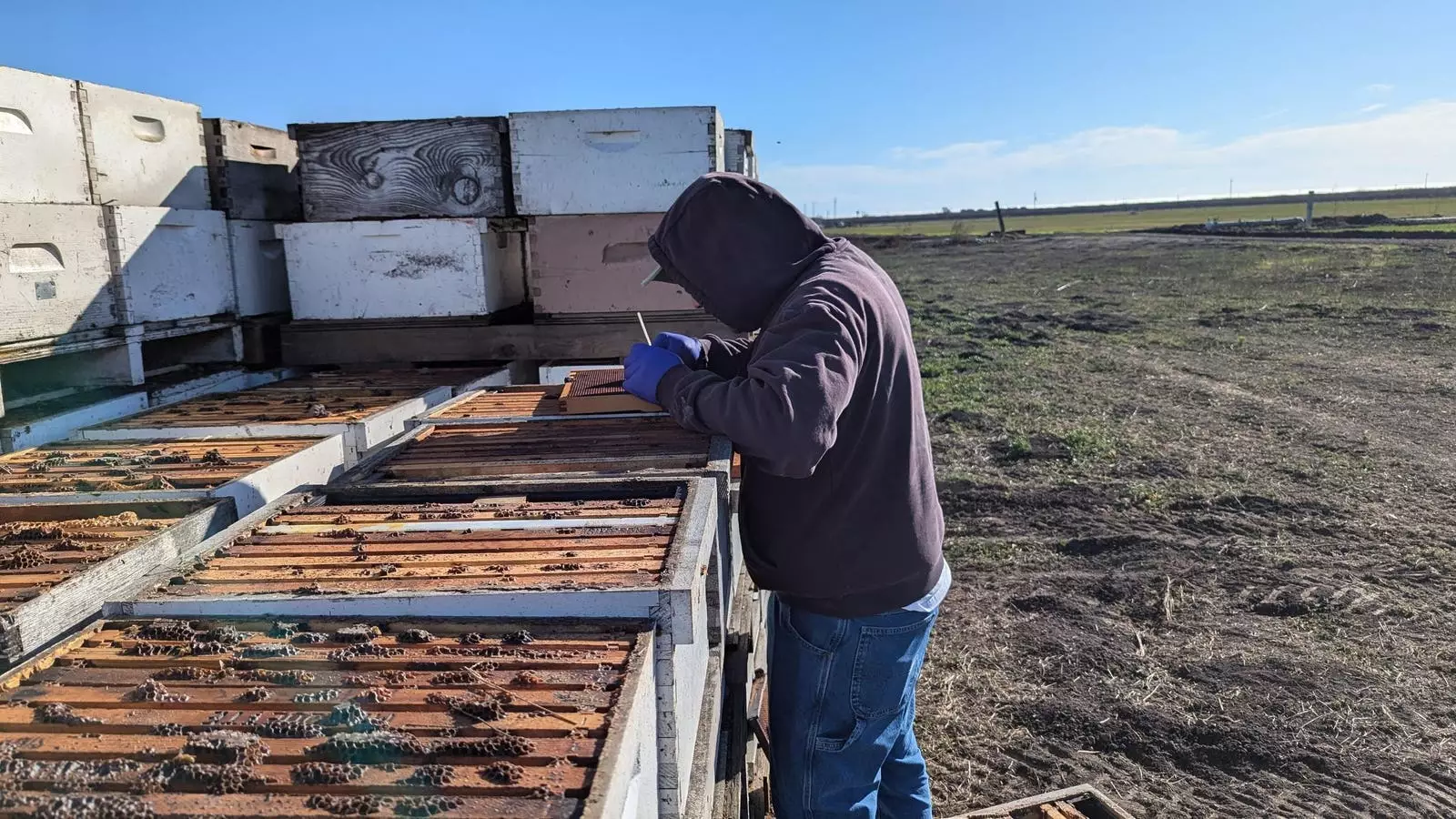This winter has heralded a catastrophic event within the beekeeping industry, with estimates revealing that millions of bees have perished, leading to a staggering loss exceeding 50% among beekeepers across the United States. A recent survey conducted among 234 beekeepers highlighted a dire financial toll, amounting to losses exceeding $139 million. As the critical California almond growing season approaches—an event that typically requires the active participation of nearly all of the country’s three million honey bee colonies—the urgency to identify the causes of this decline has intensified. Danielle Downey, executive director of Project Apis m, expressed the collective anxiety felt by beekeepers, stating, “There’s a full panic right now to figure out what’s wrong and how bad it’s going to be.”
Many beekeepers found their operations decimated upon reopening in the wake of winter, with reports indicating that upwards of half their bee populations were missing or dead. This alarming trend mirrors historical crises, notably the Colony Collapse Disorder (CCD) observed in 2007-2008, which had previously instigated widespread panic and concern in the agricultural sector. The current situation is further exasperated by essential crop pollination needs, particularly for high-demand fruits like blueberries, cherries, and cranberries, all of which may soon face shortages or inflated prices at grocery stores due to the dwindling bee populations.
The ramifications of this alarming bee mortality extend beyond immediate agricultural concerns. Blake Shook, a commercial beekeeper, reported extensive communications with fellow beekeepers, many of whom are fearing permanent shutdowns of their operations. “The industry is reeling trying to figure out what’s going on. It’s pretty scary,” he remarked. With almonds requiring a large contingent of bees for pollination, the situation sets a concerning precedent, particularly as the first round of pollination begins.
Despite ongoing research, the underlying causes of the dramatic losses have not yet been pinpointed. Traditional suspects like the varroa mite or other pests haven’t been conclusively linked to the current crisis. Various studies conducted by the USDA-ARS Bee Research Laboratory and associated organizations indicate that the losses are widespread and severe. Preliminary inspections reveal that many colonies are found dead with sufficient honey stores but devoid of adult bees.
Beekeepers now face greater percentages of loss than ever recorded. Shook noted that prior to CCD, the average loss rate stood at approximately 15%, but it has now escalated alarmingly to an initial 45%. This situation is compounded by various stressors impacting bee health, including nutritional deficiencies, pesticide exposure, and the physical strain of widespread relocation for pollination tasks.
The critical role honey bees play in U.S. agriculture cannot be overstated. Workers within the bee community stress the urgent need for better mechanisms to support and protect these invaluable pollinators. “Every year we creep closer and closer to the edge of the cliff and we know that it can’t be sustainable,” Downey warns, urging a more comprehensive approach to bee conservation.
The broader implications of the bee crisis may not be immediately visible to consumers, yet the disconcerting reality looms that the market may soon feel significant repercussions. Beekeepers like Tim Hollmann, with decades of experience, have invested substantial sums in replenishing hives lost to die-off. He equates the current crisis to an unprecedented challenge not seen before in his career. He highlights an additional layer of difficulty, noting the competition posed by cheaper imported honey, which represents the majority of honey consumed nationally.
The desperation driven by these factors has unfortunately led some within the industry to resort to unethical practices, such as stealing bees from other beekeepers. This has prompted organizations like the California State Beekeepers Association to implement measures addressing the alarming rise in hive thefts, estimating losses could exceed $3.5 million.
With critical pollination seasons looming and the diminishing bee population posing substantial risks, the time for action is now. Industry stakeholders, researchers, and policy-makers must collaborate to address the multifaceted challenges facing bees. Efforts must prioritize not only immediate interventions to prevent colossal agricultural losses but also long-term strategies that sustain bee populations and ensure their vital role in our ecosystem remains unharmed. As we advance, recognizing that honey bees are an integral part of our food system may lead to better protective measures and a more sustainable future for agriculture.


Leave a Reply